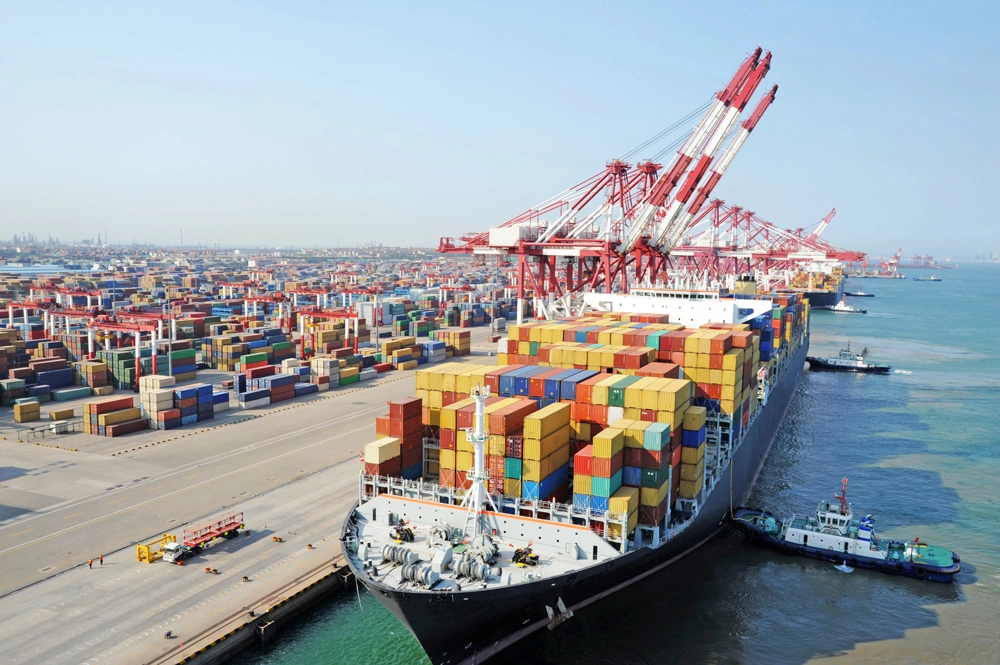The global COVID-19 has impacted international trade. In the face of difficulties, China insists on improving the port business environment, vigorously promoting trade facilitation, actively opening up the market, actively expanding imports, and constantly cultivating new advantages in foreign trade development, Stabilize the basic market of foreign trade. The steady development of China’s foreign trade not only benefits the Chinese economy and people, but also drives the common development of all trading partners and benefits the global economy and people all over the world take the initiative to open the market
Actively expand imports
on July 27, the third China International Import Expo entered the countdown of 100 days. Enterprises from all countries actively signed up for participation, and many exhibition areas were “hard to find”
the relevant person in charge of the Ministry of Commerce said that holding the Expo is an important measure for China to support trade liberalization and economic globalization and take the initiative to open its market to the world. From “selling the world” in the past to “buying the world” in today’s expansion of imports, China has taken the initiative to open the market and expand imports, driving the common development of all trading partners and benefiting the global economy and people all over the world
– Continuously reduce tariffs and stimulate import potential
since January last year, China has implemented a provisional import tax rate lower than the MFN tax rate for more than 700 commodities; From July 1, tariffs were reduced on 298 information technology products. Since January 1 this year, import tariffs on more than 850 commodities have been reduced. The overall tariff level has been continuously reduced, which has facilitated the import of high-quality goods all over the world, enriched the supply of the domestic market, created space for the reduction of commodity prices, and better met the needs of domestic production and life
– Expand the import market and promote the formation of a diversified pattern
in the first half of this year, the import and export between China and the countries along the “the Belt and Road” reached 4.2 trillion yuan, a year-on-year decrease of 0.9%, but 2.3 percentage points lower than the overall decline of China’s foreign trade; The proportion reached 29.5%, an increase of 0.7 percentage points over the same period last year
– Expand import categories and enrich consumption choices
to adapt to the trend of consumption upgrading, China continues to expand the categories of imported goods, improve the import quality, and provide people with richer consumption choices. In 2019, China’s imports of consumer goods increased by nearly 20%, accounting for more than 10% of the total imports, and the import volume exceeded 1.4 trillion yuan. In the first half of this year, China’s soybean and beef imports increased by 17.9% and 42.9% respectively
“China insists on expanding imports, demonstrates China’s responsibility to all countries in the world and injects Chinese dividends into the global economy.” Gao Feng, a spokesman for the Ministry of Commerce, said that with China’s further opening up, “China’s imports” have become a new driving force for the development of the world economy.
Improve the business environment
Promote trade facilitation
not long ago, a batch of Exported Foods of Shanghai nachal casings Co., Ltd. need to carry out qualification verification as soon as possible, otherwise it will affect the subsequent export business of the enterprise. Due to the urgency of time, Shanghai Customs innovated the “online verification” mode. The company transmitted electronic data online through the customs information system to realize “cloud disk point” and “cloud verification”. In just a few days, the verification procedures were completed and production resumed smoothly
“time is compressed, costs are reduced, trade is more convenient, and enterprises have a stronger sense of gain.” He Zhenjun, general manager of nachal company, said
Import and export goods “declare in advance” and cross-border goods “collect and pay taxes”… In recent years, China has successively issued several measures to optimize the port business environment and promote cross-border trade facilitation, actively create a market-oriented, legalized and international business environment and promote trade facilitation. “The General Administration of Customs has worked closely with the Ministry of Commerce, the State Administration of market supervision and other departments to promote relevant policies and measures to take root and achieved good results.” Huang Guansheng, director of the state port administration office, said
optimize the operation process – deepen the reform of national customs clearance integration. Enterprises can choose to declare at any customs and any port in the country; Promote the one-time joint inspection of customs, border inspection and maritime affairs; Open a “green channel” for rapid customs clearance of agricultural and sideline products; Build a “single window” of international trade to achieve full coverage of ports across the country
reducing regulatory documents – up to now, the number of regulatory documents that need to be verified in the import and export link has been reduced from 86 to 44. Except for four special circumstances such as security and confidentiality needs, all the rest have realized online verification and automatic comparison, and most goods have realized “second release” in the customs clearance link
reduce logistics costs – further improve the charging catalogue list system, simplify port charging items, strengthen market guidance and industry norms, actively promote one-stop “sunshine price”, carry out rectification of illegal and illegal charges at ports, etc. According to the data of the world bank, by 2019, the export compliance cost of China’s cross-border trade has decreased from US $568.7 per standard container in 2017 to US $330, a decrease of 42%; The cost of import compliance decreased by 65.3% from US $915.9 per standard container in 2017 to US $318
improve the time limit for customs clearance – in July this year, the overall customs clearance time for imports and exports was 38.5 hours and 2.2 hours respectively, 60.4% and 82.2% lower than that in 2017
China continues to optimize the port business environment, promote trade facilitation, and inject strong positive energy into the development of global foreign trade
the export share in the first four months increased by 0.1 percentage points year-on-year, which shows that while China’s foreign trade is resisting pressure and improving its competitiveness, it is also enhancing its driving force for world economic development.” Ni Yuefeng, director of the General Administration of customs, said
Accelerate reform and innovation
Improve trade quality
“If we successfully apply for the pilot qualification of general VAT taxpayer, then when we purchase raw materials or finished products from China and sell them to the domestic market, we can issue VAT invoices and participate in the VAT deduction of domestic links, which is expected to save 2 million yuan per year.” Nian Zhipeng, the Asia Pacific chief financial officer of Guangzhou Zhuowei caster Co., Ltd., told reporters that the company recently applied to Nansha comprehensive free trade zone for the pilot qualification of general taxpayer of value-added tax, which will greatly reduce the operating cost after being approved
recently, the State Council approved the transformation and upgrading of Guangzhou Nansha bonded port area into Guangzhou Nansha comprehensive bonded area. As a comprehensive bonded zone located in Guangdong pilot Free Trade Zone, Nansha comprehensive bonded zone will further superimpose the policy advantages of the Comprehensive Bonded Zone on the institutional innovation advantages of the pilot Free Trade Zone, so as to add more advantages to accelerate development.




